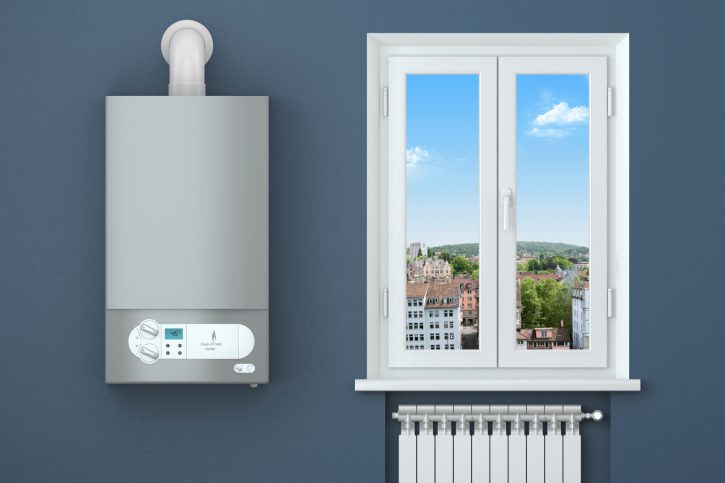People tend to use the terms boilers, furnaces and heat pumps interchangeably. Yes, they all supply warm air to a home or business; however, they do differ slightly in their approach and makeups. Let’s take a look at the differences between boilers, furnaces and heat pumps:
Boilers
True to their name, boilers boil water in order to generate heat. Once the water is hot, it flows to the radiators and baseboard heaters throughout your home to produce warmth throughout the winter months. They run most commonly on oil and natural gas. The cost of these fuels can get rather pricey, especially if you have an old boiler that doesn’t run very efficiently. Some boilers use an electronic ignition instead of a pilot light that’s always running, which is the better way to go in terms of energy savings. There are two types of boilers: steam boilers and hot water boilers. Steam boilers operate at higher temperatures than hot water models and are less efficient, says Energy.gov.
You’ll pay about $2,000 for a new boiler, more or less depending on the size of the space you need to heat. Installation costs will run you another few thousand. If you opt for a condensing boiler, you’re looking at a cost of more than $5,000.
Furnaces
Furnaces make heat in a different way — by coils rather than heating up water. They use fuel such as oil to power a motorized blower that delivers air across the coils. This warm air travels through the ductwork in your home and out the vents. Some furnaces are electric in nature, but these are usually smaller than natural gas furnaces and aren’t as efficient. Other types include geothermal furnaces and solar-powered furnaces. If you have a gas furnace, you should have a carbon monoxide detector in your home to alert you to any unsafe levels. Carbon monoxide is odorless and colorless, therefore it’s a deadly gas that you may not even realize is circulating through your home until it is too late.
Many owners of furnaces must also add a humidifier and air purifier to their units. Expect to pay about $3,500 for furnace installation, with average yearly maintenance costing about $250. This maintenance is crucial to ensure the proper operation of your heating unit.
Heat Pumps
Heat pumps utilize electricity to transfer heat from a cool area to a warm area. They are versatile pieces of equipment that can be used to increase or decrease temperatures, and are therefore a welcome addition to many homes for both winter and summer. However, they are only efficient when the temperature outside is above 45 degrees F. Any colder than that and the heat pump won’t work efficiently. This makes the heat pump a good complement to using fuel-based heat sources such as oil, for seasons such as fall and spring when you need a little extra comfort inside the home.
Heat pumps tend to boost the resale value of a home, as they are energy efficient and help to lower utility bills. A heat pump can cost you between $1500 and $4000 and beyond depending on how large a unit you need.

